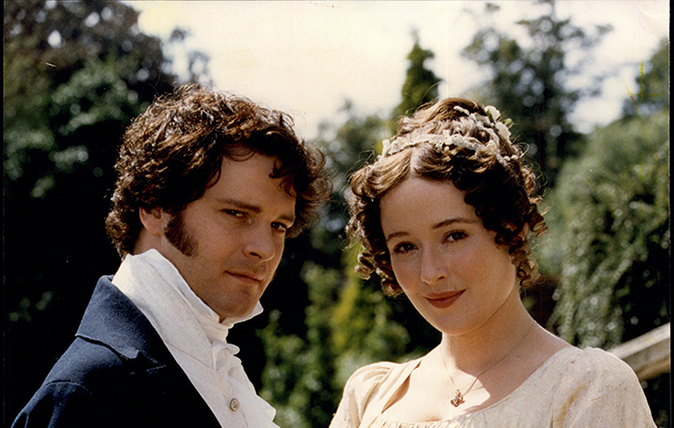Top 10 fictional spies, from Bond and Bourne to Hannay and Smiley
Cold War agent George Smiley is back after 25 years. To celebrate John le Carré’s new novel, Katy Birchall presents her top 10 literary spies.


Kimball O’Hara Kim, Rudyard Kipling (1901)
Kipling’s story follows an orphaned boy of Anglo-Irish origin living a ‘life as wild as that of the Arabian Nights’ in 1890s India. Recruited into the British Secret Service to play his part in the conflict between the British and Russians in Asia otherwise known as the ‘Great Game’, Kim travels the country with his spiritual mentor, a Tibetan lama, seeking out enemy agents. Mischievous, witty and with a natural flair for adventure, he makes a perfect young spy.
Jason Bourne The Bourne Identity, Robert Ludlum (1980)
‘In a way, he’s a functioning microcosm of us all. I mean, we’re all trying to find out who the hell we are, aren’t we?’ sighs Bourne’s psychiatrist. Fished out of the sea, riddled with bullets and with complete memory loss, Bourne’s mission is to uncover his identity while avoiding the CIA and a merciless assassin; luckily, he has a knack for survival. Multilingual, a good shot and trained to an exceptional level in martial arts, he also has extraordinary observational skills and a superior ability to remain clearheaded in tricky situations.
Alec Leamas The Spy Who Came in from the Cold, John le Carré (1963)
John le Carré admits that the inspiration for Leamas (left, played by Richard Burton) came when he saw a man in a raincoat walk tiredly into a bar at a London airport, haul out a handful of foreign change and order a large Scotch. Sent to infiltrate the East German intelligence service, Leamas is a bitter, cynical character trapped in the desolate, grey world of early-1960s espionage. Spies, he rants, are merely ‘people who play cowboys and Indians to brighten their rotten lives’. Many critics rate this book as the author’s finest work.
Unnamed The IPCRESS File, Len Deighton (1962)
The novel’s anonymous protagonist embarks on a rescue mission, told in first person narrative, and finds himself at the centre of a dangerous conspiracy. He’s working class, smart, impertinent, anti-Establishment and disarmingly funny.
‘Do it without complaint or sarcasm,’ says his superior about a new assignment. ‘It wouldn’t be the same,’ our hero responds. Len Deighton has stressed that, although his character, immortalised by Michael Caine in the film adaptation, has a lack of respect for authority, he is still a romantic hero.
James Wormold Our Man in Havana, Graham Greene (1958)
A Havana-based vacuum salesman agrees to spy for the British so that he can fund the extravagant lifestyle of his daughter, Milly. Unable to find information that might interest MI6, bumbling Wormold spices things up by selling them fake intelligence, but things become complicated when his reports start coming true. Greene’s wonderfully tongue-in-cheek thriller contains one of the most comical scenes of the genre, with the British analysing sketches of a Communist base in the mountains – which are, in fact, sketches of vacuum-cleaner parts.

James Bond Casino Royale, Ian Fleming (1953)
Enter 007, the poster boy of glamorous spy fiction. Royal Navy Commander James Bond made his first appearance in the short but thrilling Casino Royale, in which readers learnt of his trademark fondness for smoking, drinking and cars, as well as the fact that ‘something cold and ruthless’ lurks beneath his good looks. Bond’s cultural legacy is quite extraordinary, with 12 books by Fleming and the series continued by other authors, 24 films and an unparalleled global fascination with the actors who take on the role.
Exquisite houses, the beauty of Nature, and how to get the most from your life, straight to your inbox.
Richard Hannay The Thirty-Nine Steps, John Buchan (1915)
A skilled fisherman with an adventurous and self-sacrificing spirit, Hannay is a patriotic gentleman turned man on the run turned protector of significant British defence secrets – the perfect literary hero for a nation in the midst of the First World War.
Adolf Verloc The Secret Agent: A Simple Tale, Joseph Conrad (1907)
An overweight pornographic-shop owner who has ‘embraced indolence’, Verloc isn’t exactly what you’d expect of a double agent. Spying on anarchists for the Russians, he finds himself nervously taking on a more active role when they demand that he orchestrates a bombing on the Greenwich Observatory. Darkly satirical, Conrad’s novel is strikingly relevant today.
Charles Carruthers and Arthur Davies Riddle of the Sands: A Record of Secret Service, Erskine Childers (1903)
Childers’s only novel begins with government clerk Carruthers reluctantly accepting an invitation from his friend Davies to go on a yachting trip, but what starts as a holiday soon becomes an adventure as the pair uncover a German plot to invade England. They make an entertaining and effective espionage team – the adventurous and oafish Davies perfectly offsets the churlish, sophisticated Carruthers, who becomes more daring as his excitement and sense of patriotism grows.
George Smiley Call for the Dead, John le Carré (1961)
In the opening sentence, Smiley’s beautiful, aristocratic wife describes her husband as ‘breathtakingly ordinary’ – and so Mr le Carré introduced his most beloved of characters to the world. Toad-like, of a quiet disposition, mild-mannered, experienced and intelligent, Smiley fights his Cold War battles with none of Bond’s glamour or brawn, but with acute observation of human behaviour—he is often hailed as the perfect British spy.
John le Carré's new book, A Legacy of Spies is published this month (Penguin)

Credit: Alamy Stock Photo
Mother's Day wisdom: 11 priceless quotes from the world's wittiest women
We celebrate Mothering Sunday with this fantastic collection of wit and wisdom from some of the world's most successful women.

9 new cookery books to inspire a creative kitchen
This summer’s harvest of cookery books is satisfyingly unpredictable, but all the better for that, says Leslie Geddes-Brown.

Behind the names: The Austen characters you need to know
Feisty feminist heroines and dashing handsome heros.
Katy Birchall is a journalist and the author of several young adult and teen novels, including The It Girl series and the Hotel Royale series. She has written a retelling of Jane Austen’s Emma for the Awesomely Austen series and the Netflix spin-off novel Sex Education: The Road Trip. She is also the author of several romantic comedies for adults including The Secret Bridesmaid and The Wedding Season. She writes romantic fiction for young adults under the name Ivy Bailey, romantic-comedy under the name Katrina Logan, and romantic sports fiction for adults under Katherine Reilly. She lives in London with her husband, daughter and rescue dog.
